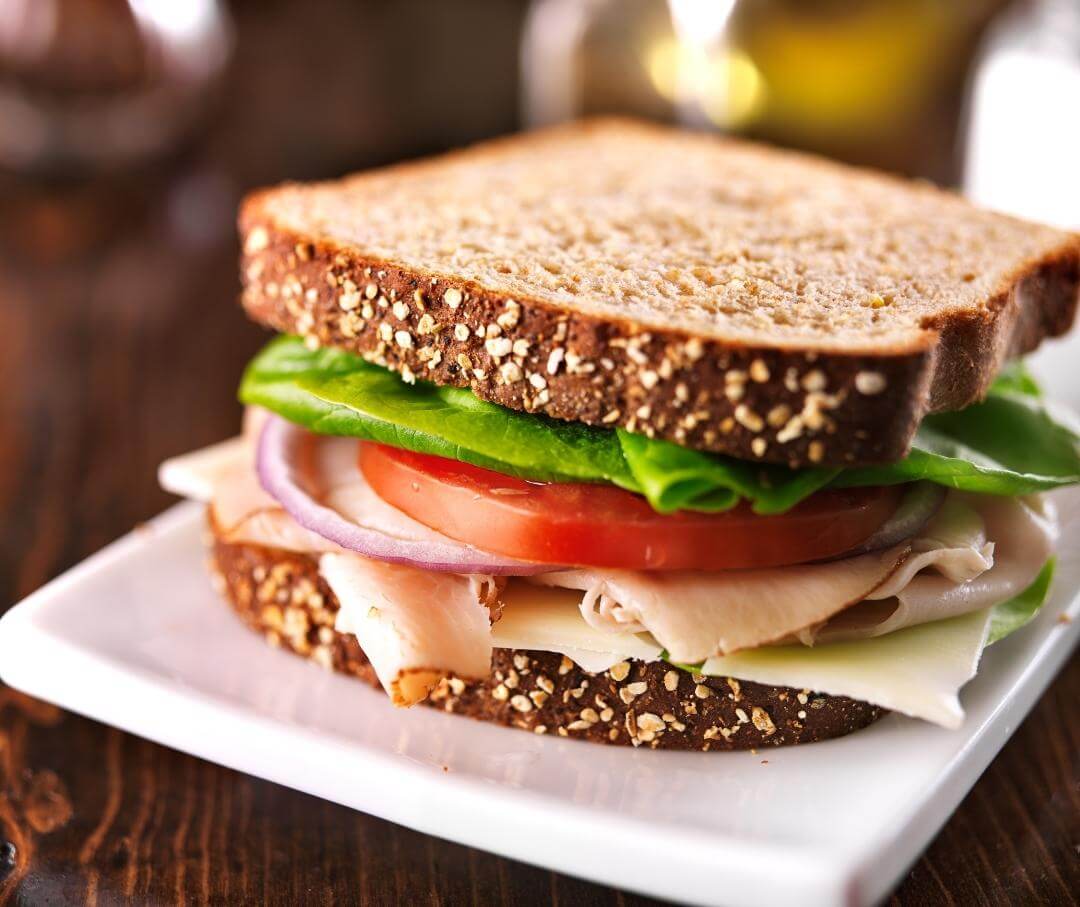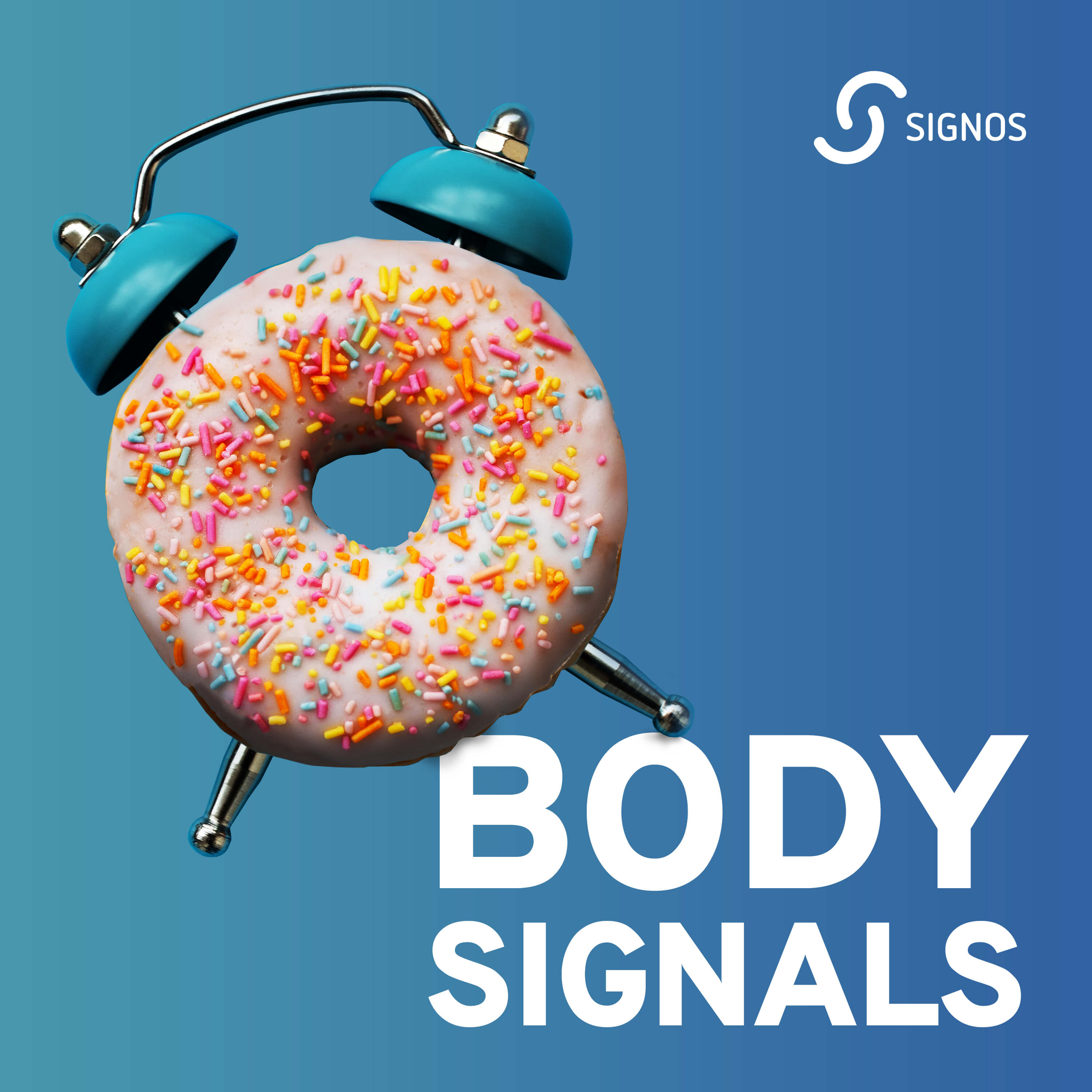Engaging in moderate or vigorous exercise on a regular basis is essential for maintaining overall health. Walking is an excellent form of low-impact, moderate-intensity exercise that has been shown to aid in weight loss, blood sugar control, reduced cardiovascular disease, stress management, and more.1 In addition, more research continues to support the finding of reduced spikes in glucose and overall blood sugar levels in those with type II diabetes when walking is done after eating a meal.2 How long should you walk after a meal to see these results? Should you wait a certain amount of time after eating before going for a walk? This article answers these questions and more about the benefits of walking post-meal, how it reduces blood sugar levels, and things you should consider before you start a walking routine after lunch.
9 Benefits of Walking After Eating
Although your biggest goal may be to lower your blood sugar levels, you may be surprised to hear that there are many other benefits of walking after eating a meal that affect our physical, emotional, and mental wellbeing. Here is a list of nine health benefits of taking a short walk post-meal and incorporating a walking program in your daily routine:
1. Improves digestion: light walking has been shown to improve digestion by increasing GI motility and reducing the uncomfortable symptoms of indigestion5. You may find that you are more “regular” with maintaining a regular walking program. Pun intended.
2. Reduces bloating: increasing your steps to 10,000/day may help reduce symptoms of bloating and GI distress by close to 50%.3 This is especially true for those who suffer from GI diseases such as Irritable Bowel Syndrome (or IBS).
3. Helps with blood sugar management: research has shown an immediate reduction in blood glucose levels when participants went for a post-meal walk for 30 minutes after a big meal. Continuing to do this on a daily basis will improve insulin sensitivity and reduce unnecessary spikes throughout the day.4
4. Reduces the risk of heart disease: participating in at least 150 minutes of moderate-intensity exercise such as walking has been shown to increase heart health and reduce cardiovascular disease risk by means of lowering blood pressure and cholesterol.6 This can be done in short intervals throughout the day (5-10 minutes) or by doing 30 minutes of walking, five days per week.
5. Aids in weight loss: walking can lead to weight loss (on average 4 to 16 pounds in 12 weeks) when done for 30 to 60 minutes daily at moderate intensities or by getting in the right amount of steps in a day to hit your weight loss goals.7

6. Helps regulate blood pressure: many studies have shown a significant reduction in baseline blood pressure even in sedentary individuals when participants walked at a moderate intensity for 30 minutes continuously or for several 10-minute intervals throughout the day.8
7. Kick starts “good mood” hormones: dopamine and serotonin are the two main hormones that provide a sense of “feeling good.” Moderate intensity, Zone-2 exercise has been shown to help release these feel-good hormones in even just a 10-minute walk or other physical activity.9
8. Taps into stored energy: the more active you are, the more your body will burn calories at rest because of the increase in your metabolism. If done at a high enough heart rate, walking can fall within “Zone 2” cardio exercise, which will also aid in burning stored fats for energy.
9. Improves sleep quality: especially for those who struggle with insomnia, regular physical activity of at least 30 minutes a day has been shown to reduce insomnia and aid in longer durations of deep sleep.10 This is because of improved blood sugar control as well as the release of serotonin - a precursor to the sleep hormone melatonin.
{{mid-cta}}
How Does Walking Lower Blood Sugar?
After eating a meal, your body begins breaking down food for digestion, and carbohydrates specifically are broken down into glucose (aka blood sugar). At this point, your pancreas releases insulin to help your body absorb the sugars out of your bloodstream, where it is then stored in the liver as glycogen or used right away for energy. For those who are insulin resistant (i.e., those living with type 2 diabetes), your body does not receive a very strong signal from the insulin that is released. This is what maintains the high levels of sugar in your blood and causes the blood sugar spikes that you may see after eating. Increasing your sensitivity to insulin through changes in diet and exercise helps your body to better receive messages from insulin and quickly absorb the sugars from your blood, thus reducing circulating blood sugar levels before noticing a spike.
Walking has been shown to improve insulin sensitivity and lower blood sugar because our working muscles require the sugar in our blood to function. This is why walking after eating a meal - instead of before - has been shown to help reduce spikes in blood sugar and help with long-term blood sugar control.11
Potential Downsides of Walking After Meals
There are not many downsides to walking after a big meal; however, there are some that can be avoidable or can be worked through over time. Doing any amount of exercise - including walking - after a meal can cause an upset stomach both during activity and afterward. This is dependent on the size of the meal, how fast the meal was eaten, and the intensity of the exercise you did after the meal.12 Typically, larger meals eaten quickly and high-intensity cardio directly after eating are more likely to cause an upset stomach. To mitigate any GI distress, make sure to eat your meal slowly, avoid eating past the feeling of fullness, and ease into physical activity while waiting about 60 minutes before starting to exercise.
3 Things to Consider When Walking After Eating
Here are a few things to consider when starting a walking program, especially if doing so after a meal.
- What is the best time to walk: research shows an optimal timing of waiting 30 minutes after a meal to exercise if the goal is to reduce spikes in blood sugar while avoiding GI distress.13
- How long should you walk: The Centers for Disease Control and Prevention (CDC) recommends obtaining at least 150 minutes of moderate-intensity physical activity each week in order to maintain overall health and reduce the risk of chronic disease. In order to see significant effects of decreased blood sugar, research shows benefits with just two to five minute walks after eating, with the most benefits happening at 20-30 minutes of walking after a meal.14,15
- How to regulate the intensity of your walk: it is important to remember that the intensity of your walking matters for achieving these goals. Too low of an intensity may not get your heart rate elevated enough to assist in blood sugar management, and too high of an intensity may cause GI distress. Aim for a brisk walk and to stay within your Zone 2 target heart rate (60-70% of your maximum heart rate). This will help to sustain a moderate intensity of exercise that achieves a reduced level of blood sugar and weight loss. That said, any amount of movement will help. Start small if you are new to exercise and work your way up to higher intensities once it is safe to do so.
Learn more about healthy lifestyle habits on Signos’ blog, such as advice on nutrition, weight loss, other forms of exercise, stress management, and more.

Learn More About How to Achieve Better Health Through Exercise with Signos’ Expert Advice
If you have more questions on improving your health, fitness, and nutrition, seek the expert advice of the Signos continuous glucose monitor and Signos team. A continuous glucose monitor (CGM) can give you the insights to make smarter nutrition and exercise choices. The Signos app provides a unique, personalized program to help you lose weight and reach your health goals. Take this quiz to see if Signos is a good fit for you and reach your goals faster than ever before.
- Item 1
- Item 2
- item 3
Topics discussed in this article:
References
- Sugiyarto, S., Sumardino, S., & Yusran P., A. D. M. (2022). Literature Review: Effect of Brisk Walking on Blood Sugar Levels in Pa-tients with Type 2 Diabetes Mellitus. Basic and Applied Nursing Research Journal, 3(2), 37-45. https://doi.org/10.11594/banrj.03.02.02
- Reynolds, A. N., & Venn, B. J. (2018). The Timing of Activity after Eating Affects the Glycaemic Response of Healthy Adults: A Randomised Controlled Trial. Nutrients, 10(11), 1743. https://doi.org/10.3390/nu10111743
- Hamaguchi, T., Tayama, J., Suzuki, M., Nakaya, N., Takizawa, H., Koizumi, K., Amano, Y., Kanazawa, M., & Fukudo, S. (2020). The effects of locomotor activity on gastrointestinal symptoms of irritable bowel syndrome among younger people: An observational study. PloS one, 15(5), e0234089. https://doi.org/10.1371/journal.pone.0234089
- Yamanouchi, K., Abe, R., Takeda, A., Atsumi, Y., Shichiri, M., and Sato, Y. (2002). The effect of walking before and after breakfast on blood glucose levels in patients with type 1 diabetes treated with intensive insulin therapy. Diabetes Research and Clinical Practice; 58 (1): 11-18.
- Song, B. K., Kim, Y. S., Kim, H. S., Oh, J. W., Lee, O., & Kim, J. S. (2018). Combined exercise improves gastrointestinal motility in psychiatric in patients. World Journal of Clinical Cases, 6(8), 207–213. https://doi.org/10.12998/wjcc.v6.i8.207
- Nystoriak, M. A., & Bhatnagar, A. (2018). Cardiovascular Effects and Benefits of Exercise. Frontiers in cardiovascular medicine, 5, 135. https://doi.org/10.3389/fcvm.2018.00135
- Donnelly JE, Blair SN, Jakcic JM, Manore MM, Rankin JW, Smith BK. (2009) Appropriate Physical Activity Intervention Strategies for Weight Loss and Prevention of Weight Regain for Adults. Medicine & Science in Sports & Exercise;41(2):459-471. doi:10.1249/MSS.0b013e3181949333
- Mandini, S., Conconi, F., Mori, E., Myers, J., Grazzi, G., & Mazzoni, G. (2018). Walking and hypertension: greater reductions in subjects with higher baseline systolic blood pressure following six months of guided walking. PeerJ, 6, e5471. https://doi.org/10.7717/peerj.5471
- Hansen, C. J., Stevens, L. C., & Coast, J. R. (2001). Exercise duration and mood state: how much is enough to feel better?. Health psychology : official journal of the Division of Health Psychology, American Psychological Association, 20(4), 267–275. https://doi.org/10.1037//0278-6133.20.4.267
- Passos, G. S., Poyares, D. L., Santana, M. G., Tufik, S., & Mello, M. T. (2012). Is exercise an alternative treatment for chronic insomnia?. Clinics (Sao Paulo, Brazil), 67(6), 653–660. https://doi.org/10.6061/clinics/2012(06)17
- Aqeel, M., Forster, A., Richards, E. A., Hennessy, E., McGowan, B., Bhadra, A., Guo, J., Gelfand, S., Delp, E., & Eicher-Miller, H. A. (2020). The Effect of Timing of Exercise and Eating on Postprandial Response in Adults: A Systematic Review. Nutrients, 12(1), 221. https://doi.org/10.3390/nu12010221
- de Oliveira, E. P., & Burini, R. C. (2011). Food-dependent, exercise-induced gastrointestinal distress. Journal of the International Society of Sports Nutrition, 8, 12. https://doi.org/10.1186/1550-2783-8-12
- Reynolds, A. N., & Venn, B. J. (2018). The Timing of Activity after Eating Affects the Glycaemic Response of Healthy Adults: A Randomised Controlled Trial. Nutrients, 10(11), 1743. https://doi.org/10.3390/nu10111743
- Rachel Fairbank. (2022, August 4). Just 2 minutes of walking after a meal is surprisingly good for you. The New York Times. Retrieved from: https://www.nytimes.com/2022/08/04/well/move/walking-after-eating-blood-sugar.html#:~:text=Walking%20within%2060%20to%2090,sugar%20levels%20tend%20to%20peak
- Buffey, A.J., Herring, M.P., Langley, C.K. et al. The Acute Effects of Interrupting Prolonged Sitting Time in Adults with Standing and Light-Intensity Walking on Biomarkers of Cardiometabolic Health in Adults: A Systematic Review and Meta-analysis. Sports Med 52, 1765–1787 (2022). https://doi.org/10.1007/s40279-022-01649-4
































